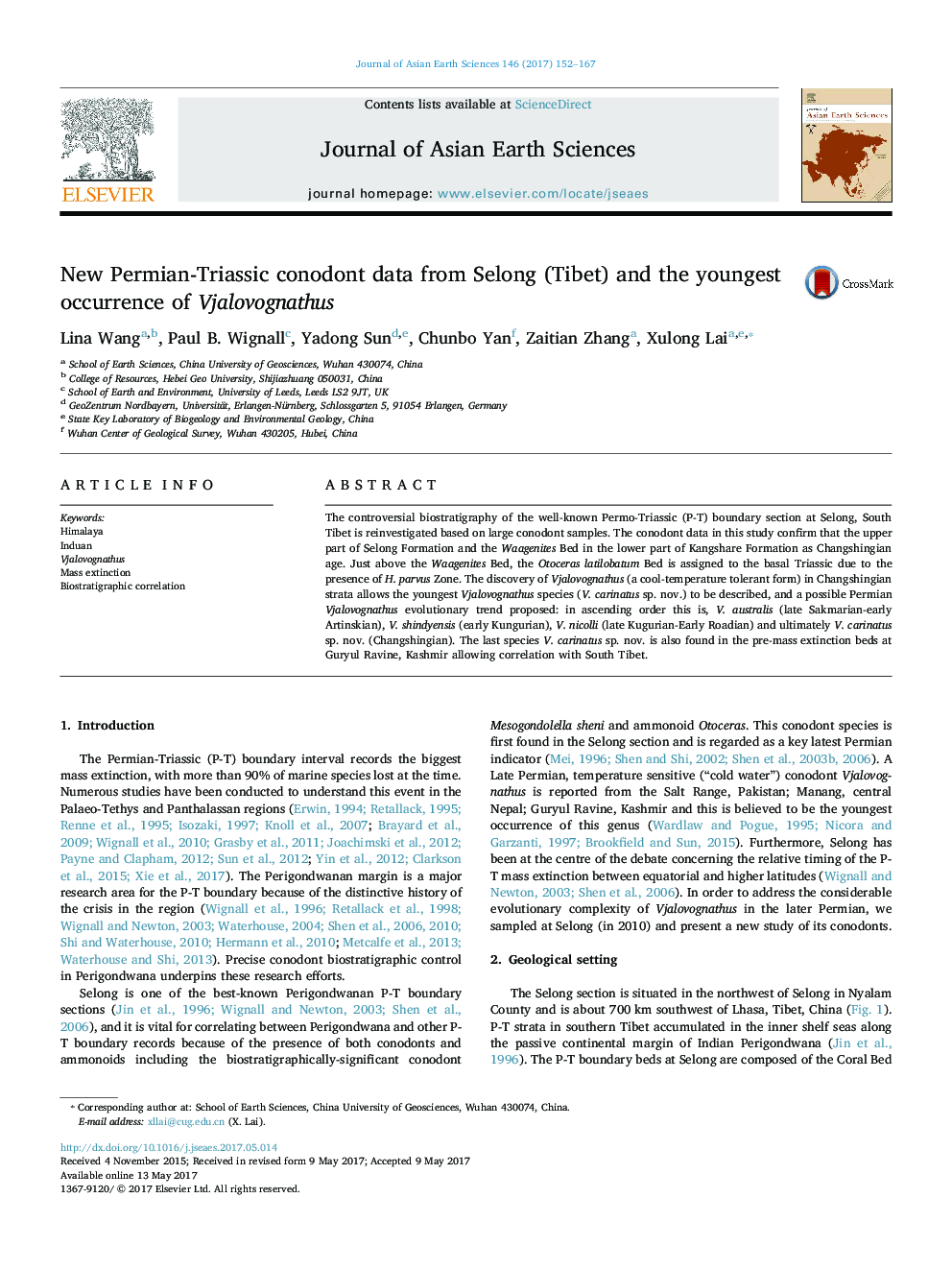| Article ID | Journal | Published Year | Pages | File Type |
|---|---|---|---|---|
| 5785925 | Journal of Asian Earth Sciences | 2017 | 16 Pages |
â¢Vjalovognathus has been found in Changshingian strata from South Tibet.â¢The youngest Vjalovognathus, V. carinatus sp. nov. has been described.â¢A possible Permian Vjalovognathus evolutionary trend was proposed.â¢Numerous Permian specimens appeared in the Otoceras latilobatum Bed.
The controversial biostratigraphy of the well-known Permo-Triassic (P-T) boundary section at Selong, South Tibet is reinvestigated based on large conodont samples. The conodont data in this study confirm that the upper part of Selong Formation and the Waagenites Bed in the lower part of Kangshare Formation as Changshingian age. Just above the Waagenites Bed, the Otoceras latilobatum Bed is assigned to the basal Triassic due to the presence of H. parvus Zone. The discovery of Vjalovognathus (a cool-temperature tolerant form) in Changshingian strata allows the youngest Vjalovognathus species (V. carinatus sp. nov.) to be described, and a possible Permian Vjalovognathus evolutionary trend proposed: in ascending order this is, V. australis (late Sakmarian-early Artinskian), V. shindyensis (early Kungurian), V. nicolli (late Kugurian-Early Roadian) and ultimately V. carinatus sp. nov. (Changshingian). The last species V. carinatus sp. nov. is also found in the pre-mass extinction beds at Guryul Ravine, Kashmir allowing correlation with South Tibet.
Graphical abstractDownload high-res image (224KB)Download full-size image
